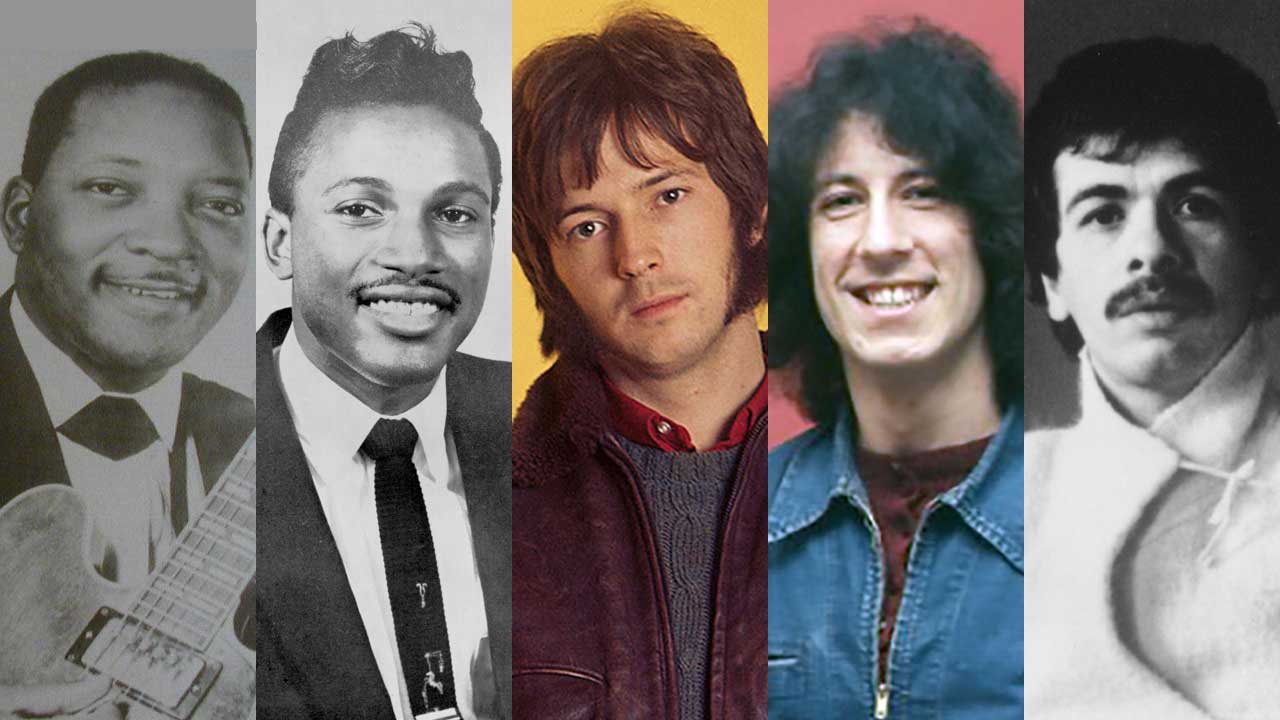When Santana had a Top 5 single with Black Magic Woman in 1971, it was a great example of how music can often be the result of – to borrow a phrase from Sir Isaac Newton - “standing on the shoulders of giants.” In this case, guitar-wielding giants.
The evolution of Black Magic Woman stretches back to 1957, with an obscure record by Chicago guitarist Jody Williams. Williams had cut his teeth in the early '50s, playing on the street with his mentor Bo Diddley, then gigging with such blues artists as Memphis Minnie and Elmore James. That's him playing the incendiary solo on Diddley's classic Who Do You Love?
In his extended break, you can hear several licks that would inform the styles of both Eric Clapton and Jimmy Page. Williams made his own records too, and the B-side to his 1957 single You May was an instrumental called Lucky Lou. From the phrasing of the opening guitar riff to the slinky Afro-Cuban groove, it's obviously the blueprint for Black Magic Woman.
A year later, fellow Chicago blues guitarist Otis Rush “borrowed” that riff and feel for his record All Your Love (I Miss Your Loving), adding a vocal melody. Produced by Willie Dixon and featuring Ike Turner on rhythm guitar, it became one of Rush's signature hits.
Eight years later, in 1966, it was covered by John Mayall's Bluesbreakers, on the landmark “Beano” LP featuring Eric Clapton. The bass player on that record was John McVie. And a year later, after Clapton left to form Cream, there was a brief three-month window when the Bluesbreakers line-up included McVie, drummer Mick Fleetwood and lead guitarist Peter Green, the nucleus of the soon-to-be-formed Fleetwood Mac.
From there, we cut to Green writing a song for his svelte fashion model girlfriend, Sandra Elsdon, who he'd nicknamed “Magic Mama.” Green said in Peter Green: The Biography: “One of the things John Mayall said was that if you really like something, you should take the first lines, and make up another song from them. So that's what I did with Black Magic Woman.”
The song, nodding to All Your Love and Lucky Lou, was released as a single by Fleetwood Mac in 1968 and hit #37 on the UK charts.
And that's where Carlos Santana enters the picture. In the book Guitar Greats, he said, “I used to go see the original Fleetwood Mac, and they used to kill me, just knock me out. To me they were the best blues band.”
So in 1970, when Santana keyboardist Gregg Rolie started to play Black Magic Woman during a soundcheck, it was a memorable moment. Santana told Rolling Stone, “I swear to you, and this is for real, whenever we play the song, I remember the first time we played it in a soundcheck in Fresno in a parking lot. Gregg brought the song from Fleetwood Mac, Peter Green. And I remember saying, 'Hmm, I can bring a little bit of Otis Rush here and a little bit of Wes Montgomery here.'”
Santana's recorded version, featuring Rolie on lead vocals, was on the their best-selling second album, Abraxas. Adding yet another shoulder and another giant, the single switched gears into a double-time outro jam, based on Gypsy Queen, by Hungarian jazz guitarist Gábor Szabó. Discussing the song's long journey, Santana told Raised On Radio in 2016: “We all listened to everything, and we sculpture our own beauty and expression from the things that we love.”
In 1998, when Santana was inducted into the Rock & Roll Hall of Fame, the band was joined by Peter Green for a seven-minute version of Black Magic Woman.

